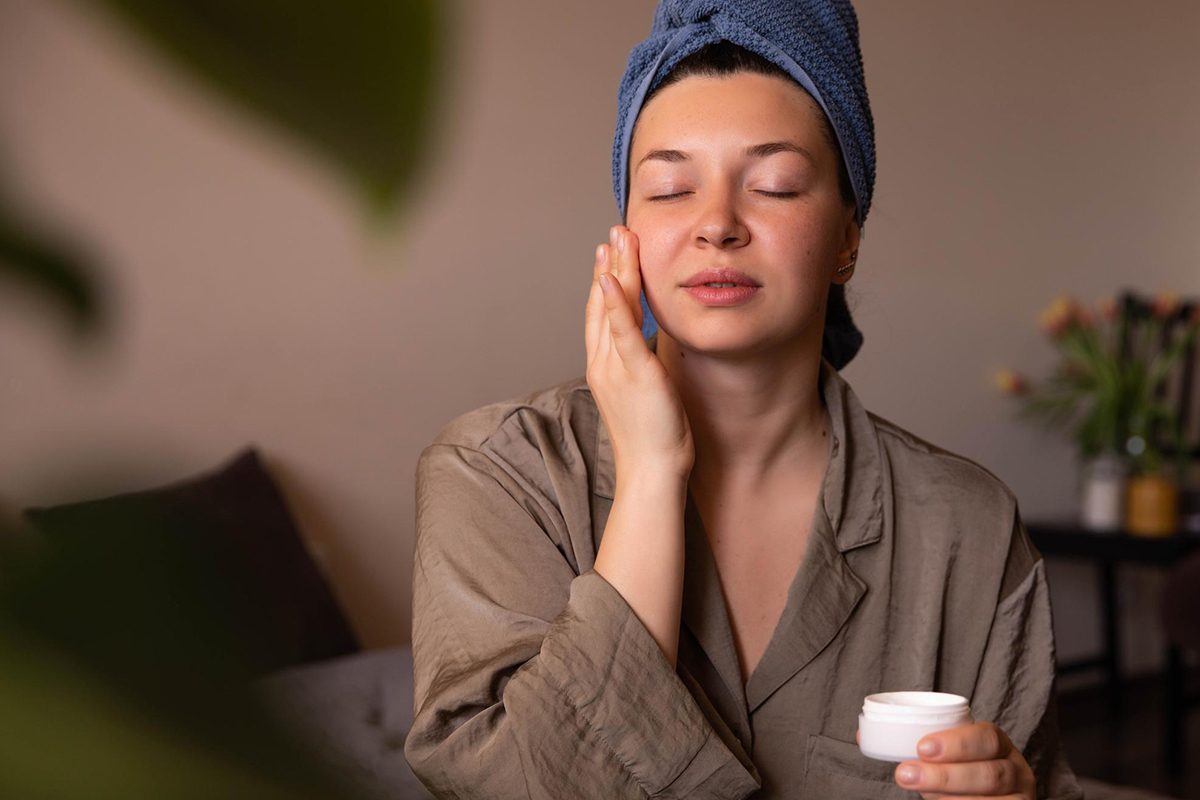Climate change is becoming increasingly noticeable: sudden temperature swings, increased ultraviolet radiation, and worsening air quality directly affect skin health. The face, being the most exposed part of the body, is the first to encounter these aggressive environmental factors. Therefore, proper facial skincare in such conditions requires special attention and a consistent approach.
Protection from UV Rays and Extreme Temperatures
One of the most aggressive factors for the skin remains ultraviolet radiation. Even on cloudy days, sun rays penetrate through clouds, damaging epidermal cells.
- Use sunscreen daily. Even in winter, apply SPF cream with at least SPF 30.
- Create a protective barrier. In colder months, use thick-textured creams that form a protective film on the skin.
- Don’t forget your lips. They are also prone to wind and sun damage. SPF balms will prevent dryness and cracking.
In conditions with sudden temperature changes (e.g., stepping from a warm room into freezing air), the skin experiences stress, resulting in redness, dryness, and irritation. Regular hydration and the right protective products will help minimize these negative effects.
Cleansing and Hydrating: Balance is Key
In polluted and dusty air conditions, thorough cleansing becomes an essential part of daily care. However, over-cleansing can damage the skin’s natural protective barrier.
- Cleanse your skin twice a day. Use gentle gels or foaming cleansers without harsh ingredients in the morning and evening.
- Use toners and micellar water. These help remove residue and prepare the skin for hydration.
- Deep cleansing. Once a week, use a mild scrub or enzyme mask to remove dead skin cells.
Hydration is the second key stage of care. In conditions of increased air dryness or, conversely, high humidity, the skin needs to adapt.
- Light gels and serums in the heat. In warmer seasons, choose light textures with hyaluronic acid and vitamins.
- Nourishing creams in cold weather. In winter, skin needs more fats and oils to retain moisture.
- Don’t forget humidifiers. Heated indoor air tends to be dry, which negatively affects the skin.
Antioxidants and Vitamins: Internal Skin Support
Antioxidants help the skin fight free radicals, which are activated by sun exposure, stress, and polluted air.
- Vitamin C. Brightens skin, combats pigmentation, and boosts protection.
- Vitamin E. Provides excellent hydration and cell repair.
- Retinol. Promotes skin renewal and smooths wrinkles.
Incorporate more antioxidant-rich foods into your diet: berries, nuts, spinach, and avocado. Drink plenty of water to maintain cellular hydration.
Adapting Skincare to Different Seasons
The climate is becoming less predictable, so it’s essential to adjust your skincare routine to current weather conditions.
- Spring and Summer: Light moisturizing creams, sun protection products, cooling masks.
- Autumn and Winter: Thick nourishing creams, oils, and barrier products.
- Between seasons: Use neutral products that do not overload the skin.
Regular Cosmetic Treatments
Professional care helps the skin recover and withstand environmental stressors.
- Deep hydration and nourishment. Treatments with hyaluronic acid.
- Antioxidant masks. Help detoxify and restore the skin.
- Peels and cleansing treatments. Limit them to once a month to avoid damaging the skin barrier.
Climate change presents a challenge for our skin. However, proper and consistent care will help maintain its health and beauty in any condition. Don’t forget UV protection, the balance of cleansing and hydration, and antioxidant support. Most importantly, listen to your skin and respond to its needs.


